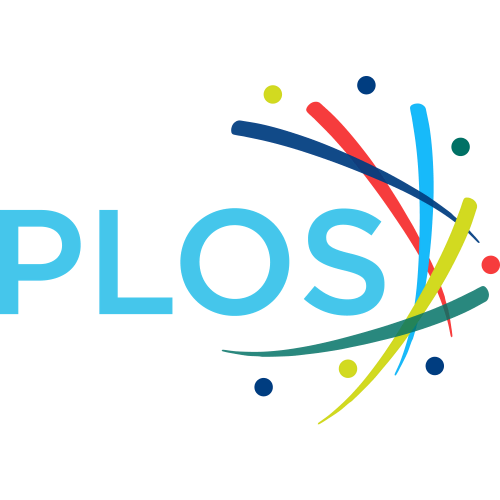Use of Multi-response Modelling to Investigate Mechanisms of β-Carotene Degradation in Dried Orange-Fleshed Sweet Potato During Storage: from Carotenoids to Aroma Compounds
Nawel Achir
1
,
Caroline Pénicaud
2, 3
,
Aurélie Bechoff
4
,
Renaud Boulanger
1
,
Manuel Dornier
1
,
Claudie Dhuique-Mayer
1
2
INRA, UMR782 Génie et Microbiologie des Procédés Alimentaires, Thiverval Grignon, France
|
3
AgroParisTech, UMR782 Génie et Microbiologie des Procédés Alimentaires, Thiverval Grignon, France
|
Publication type: Journal Article
Publication date: 2013-12-10
scimago Q1
wos Q1
SJR: 1.179
CiteScore: 9.9
Impact factor: 5.8
ISSN: 19355130, 19355149
Process Chemistry and Technology
Industrial and Manufacturing Engineering
Food Science
Safety, Risk, Reliability and Quality
Abstract
In order to give insight into β-carotene degradation mechanism during the storage of dried orange-fleshed sweet potato, and particularly into the role of isomers and norisoprenoids formation, multi-response kinetic modelling was applied. Determination of degradation compounds were carried out by HPLD-DAD and SPME-GC-MS as a function of time between 10 and 40 °C and at four water activities from 0.13 to 0.76. Kinetic modelling was developed assuming first-order reactions and by using mass balance. Eight compounds, namely, two isomers (9-cis- and 13-cis-β-carotene), two β-carotene epoxides (β-carotene 5,6 and 5,8 epoxide) and four volatile compounds (β-cyclocitral, β-ionone, 5,6-epoxy-β-ionone and dihydroactinidiolide), were integrated into two theoretical reaction schemes. The different models were discriminated according to goodness of fit to experimental data. This work showed that: (1) the formation of cis-isomers from β-carotene preceded oxidation, (2) β-cyclocitral arose directly from β-carotene scission while the other norisoprenoids resulted from β-carotene epoxide degradation, (3) cis-isomers were high reactive compounds. Temperature had a major influence on reaction rates k while water activities only impacted k at values under 0.51. Therefore, multi-response modelling is not only a tool to predict β-carotene degradation but a interesting way to select the appropriate degradation scheme based on the different options presented in literature.
Found
Nothing found, try to update filter.
Found
Nothing found, try to update filter.
Top-30
Journals
|
1
2
|
|
|
Food Research International
2 publications, 15.38%
|
|
|
Molecules
1 publication, 7.69%
|
|
|
Plant Foods for Human Nutrition
1 publication, 7.69%
|
|
|
LWT - Food Science and Technology
1 publication, 7.69%
|
|
|
Food and Bioprocess Technology
1 publication, 7.69%
|
|
|
PLoS ONE
1 publication, 7.69%
|
|
|
Journal of Food Composition and Analysis
1 publication, 7.69%
|
|
|
Journal of Agricultural and Food Chemistry
1 publication, 7.69%
|
|
|
Journal of Food Quality
1 publication, 7.69%
|
|
|
Comprehensive Reviews in Food Science and Food Safety
1 publication, 7.69%
|
|
|
1
2
|
Publishers
|
1
2
3
4
5
|
|
|
Elsevier
5 publications, 38.46%
|
|
|
Springer Nature
2 publications, 15.38%
|
|
|
Wiley
2 publications, 15.38%
|
|
|
MDPI
1 publication, 7.69%
|
|
|
Public Library of Science (PLoS)
1 publication, 7.69%
|
|
|
American Chemical Society (ACS)
1 publication, 7.69%
|
|
|
Hindawi Limited
1 publication, 7.69%
|
|
|
1
2
3
4
5
|
- We do not take into account publications without a DOI.
- Statistics recalculated weekly.
Are you a researcher?
Create a profile to get free access to personal recommendations for colleagues and new articles.
Metrics
13
Total citations:
13
Citations from 2024:
1
(7.69%)
Cite this
GOST |
RIS |
BibTex |
MLA
Cite this
GOST
Copy
Achir N. et al. Use of Multi-response Modelling to Investigate Mechanisms of β-Carotene Degradation in Dried Orange-Fleshed Sweet Potato During Storage: from Carotenoids to Aroma Compounds // Food and Bioprocess Technology. 2013. Vol. 7. No. 6. pp. 1656-1669.
GOST all authors (up to 50)
Copy
Achir N., Pénicaud C., Bechoff A., Boulanger R., Dornier M., Dhuique-Mayer C. Use of Multi-response Modelling to Investigate Mechanisms of β-Carotene Degradation in Dried Orange-Fleshed Sweet Potato During Storage: from Carotenoids to Aroma Compounds // Food and Bioprocess Technology. 2013. Vol. 7. No. 6. pp. 1656-1669.
Cite this
RIS
Copy
TY - JOUR
DO - 10.1007/s11947-013-1229-y
UR - https://doi.org/10.1007/s11947-013-1229-y
TI - Use of Multi-response Modelling to Investigate Mechanisms of β-Carotene Degradation in Dried Orange-Fleshed Sweet Potato During Storage: from Carotenoids to Aroma Compounds
T2 - Food and Bioprocess Technology
AU - Achir, Nawel
AU - Pénicaud, Caroline
AU - Bechoff, Aurélie
AU - Boulanger, Renaud
AU - Dornier, Manuel
AU - Dhuique-Mayer, Claudie
PY - 2013
DA - 2013/12/10
PB - Springer Nature
SP - 1656-1669
IS - 6
VL - 7
SN - 1935-5130
SN - 1935-5149
ER -
Cite this
BibTex (up to 50 authors)
Copy
@article{2013_Achir,
author = {Nawel Achir and Caroline Pénicaud and Aurélie Bechoff and Renaud Boulanger and Manuel Dornier and Claudie Dhuique-Mayer},
title = {Use of Multi-response Modelling to Investigate Mechanisms of β-Carotene Degradation in Dried Orange-Fleshed Sweet Potato During Storage: from Carotenoids to Aroma Compounds},
journal = {Food and Bioprocess Technology},
year = {2013},
volume = {7},
publisher = {Springer Nature},
month = {dec},
url = {https://doi.org/10.1007/s11947-013-1229-y},
number = {6},
pages = {1656--1669},
doi = {10.1007/s11947-013-1229-y}
}
Cite this
MLA
Copy
Achir, Nawel, et al. “Use of Multi-response Modelling to Investigate Mechanisms of β-Carotene Degradation in Dried Orange-Fleshed Sweet Potato During Storage: from Carotenoids to Aroma Compounds.” Food and Bioprocess Technology, vol. 7, no. 6, Dec. 2013, pp. 1656-1669. https://doi.org/10.1007/s11947-013-1229-y.








